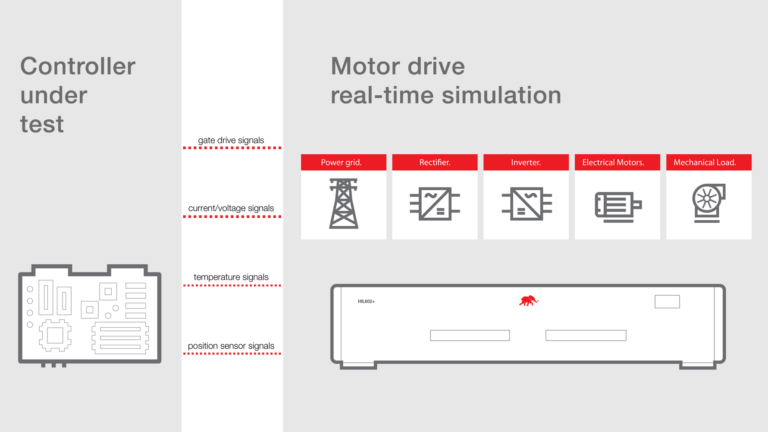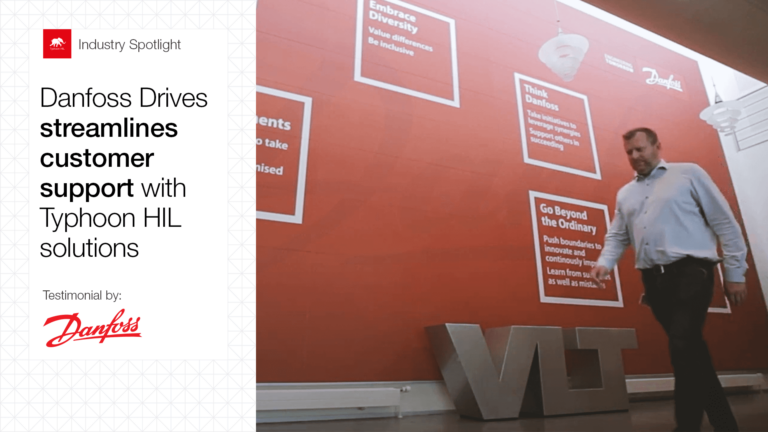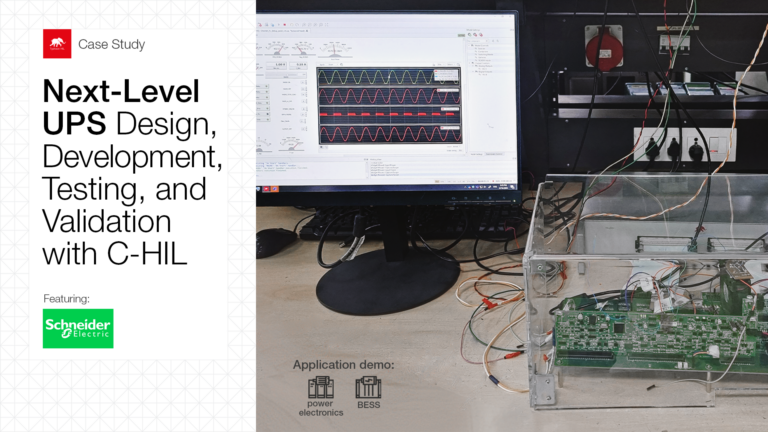
Fuji Electric Co., Ltd.
Power Electronics System Energy Business Headquarters
Power Supply Equipment Development Department
Mr. Kazuyoshi Umezawa, Mr. Motohiro Tsukuta, Mr. Takuya Kimizu (from left to right)
Introduction
About Fuji Electric
Since its establishment, Fuji Electric’s Kobe site has served as the development and manufacturing hub for advanced power electronics converter-based products. We had a unique chance to talk to their control development and control testing team and learn firsthand how they use the Typhoon HIL platform for their Uninterruptible Power Supply (UPS) development.
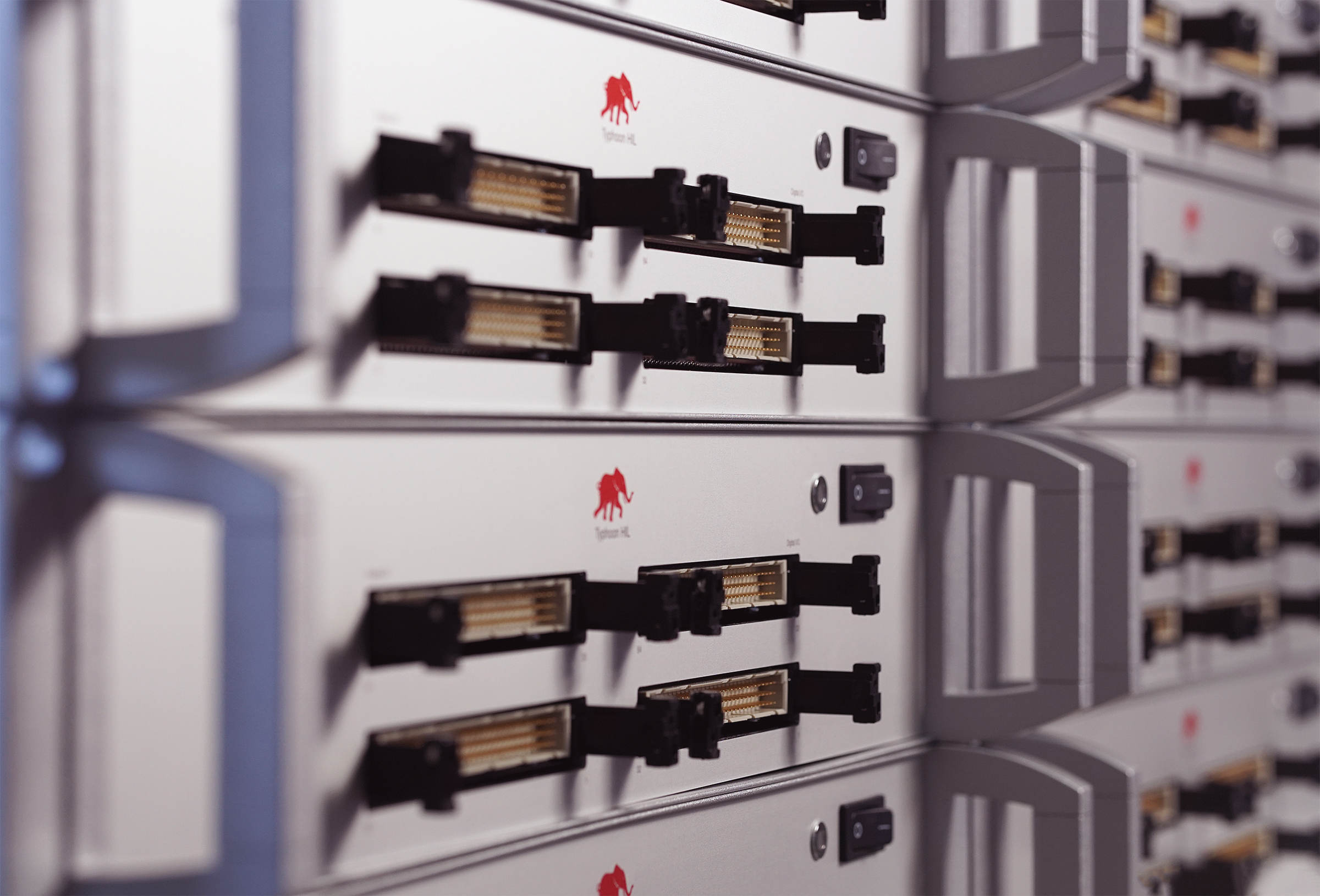
The deciding factor for choosing Typhoon HIL were ultra-high fidelity and ease of use.
Mr. Motohiro Tsukuta
What does Fuji Electric’s UPS development department do?
Our team in Fuji Electric is responsible for the development of a whole spectrum of uninterruptible power supply (UPS) products, namely: small UPS systems (1000kVA) for commercial use, MW scale UPS systems for data centers (1.5MVA), as well as high-power (1MVA) inverters for photovoltaic power generation, and fuel cells power converters (100kVA).
How did you learn about Typhoon HIL?
A few years ago, we made an internal decision to adopt Controller Hardware In the Loop (C-HIL) technology to improve our control development and control testing processes. After initial research, we found five companies that were offering HIL products, looked at their catalogs, and did a deep dive into the specs and performance. In the end, we chose the Typhoon HIL solution; not only were the HIL specifications superior to other solutions, but Typhoon HIL offered a complete solution comprising software, hardware, and engineering services.
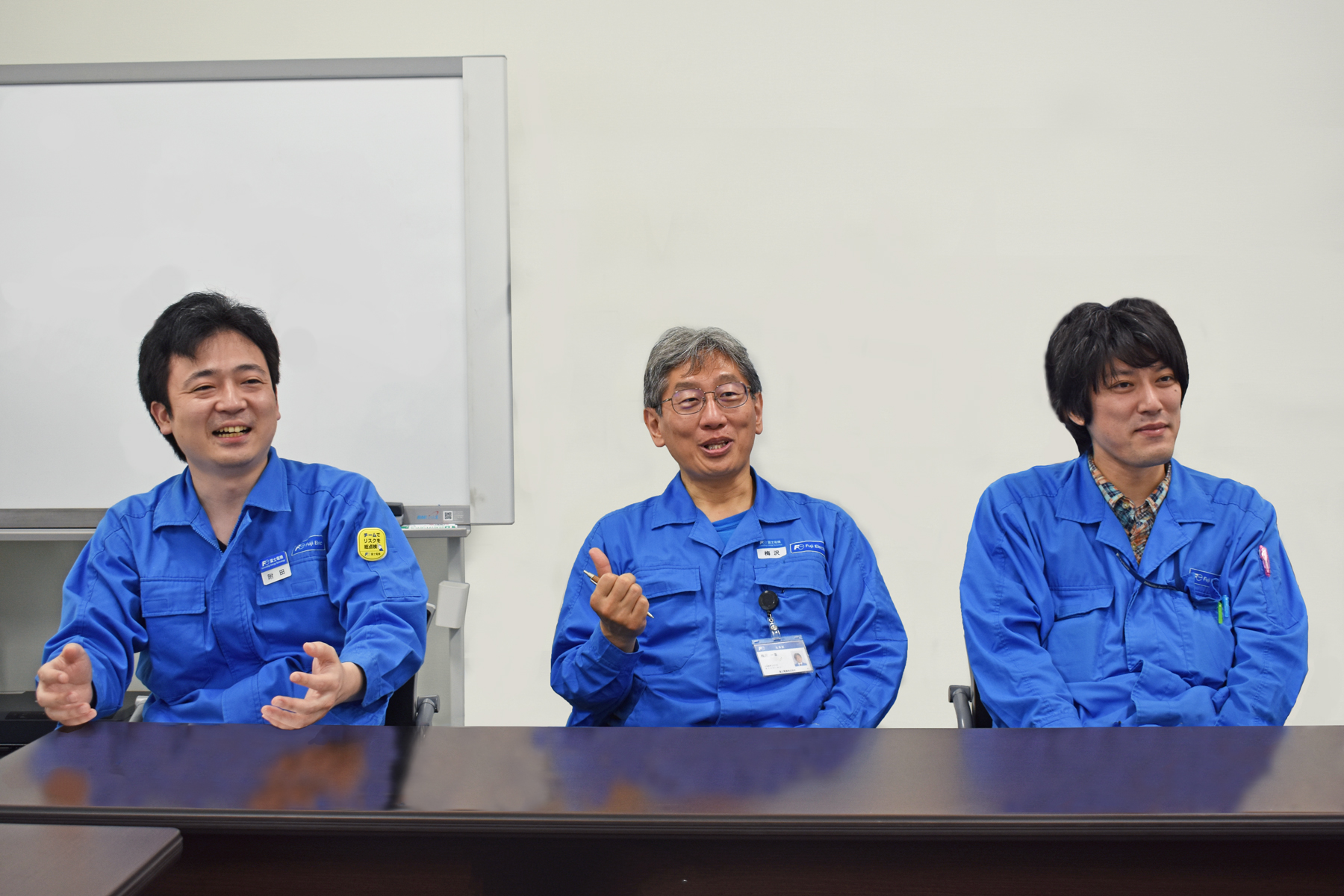
We felt that using only off-line simulators and lab tests was seriously slowing down our product development.
Mr. Motohiro Tsukuta
Challenges
Can you tell us about your design and testing processes before HIL?
Before we adopted C-HIL for our control development and testing, we relied heavily on three methods:
- Offline simulation;
- “Open-loop” HIL simulation;
- High-power laboratory testing.
Offline simulation for early testing (early V&V) of the controller is very limited since simulations use low-fidelity model abstractions of real control firmware/hardware; furthermore, simulations are typically very slow and time-consuming. In addition to offline simulation, we debugged controllers by using signal generators as stimuli to the control board under test, what we call an “open-loop” HIL (early V&V). This approach is seriously limited since we couldn’t simulate the converter power stage model “closed-loop” with the controller.
As a final stage of controller testing (late V&V), once the power converter is designed and ready, we will be debugging the software in our high-power laboratory. Injecting faults during the actual high-power tests was expensive, dangerous, and potentially catastrophic. Hence, achieving good test coverage with the real power stage was very difficult and expensive. Also, when testing the parallel operation of multiple UPS systems, power requirements would increase requiring special loads, additional personnel, and hence driving the cost and time requirements.
Solution
What is the deciding factor for introducing Typhoon HIL?
For us, the key factor was the fidelity and the overall performance of the HIL. When comparing Typhoon with other HIL manufacturers, we focused on performance. A real-time simulation step of 250 ns or less was necessary in order to obtain high-fidelity simulation results; e.g., to verify control performance and to verify high-speed protection functions. Some of our (Fuji Electric) controllers sample with a resolution of 3 micro-seconds, so if the simulator is slower than that test results would not be useful.

What type of power converter model are you building?
Currently, we are building a new UPS power converter model (single converter and parallel configuration); for simulating parallel UPS systems, we parallel three Typhoon HIL604 units to further increase the simulation capacity. We are preparing models for fault injection on the side of the UPS as well as short circuit events on the grid side.
What is your favorite benefit of HIL testing?
Now with the C-HIL testbed, it is possible to quickly check the controller behavior, making it very easy to develop and debug new control software functionality. In addition, now we can verify the operation in cases that are difficult to reproduce in a high-power lab, reducing the time and cost.
In the case where we can compare results from C-HIL setup against power lab or field test results and we get perfect matching, it often feels like magic.
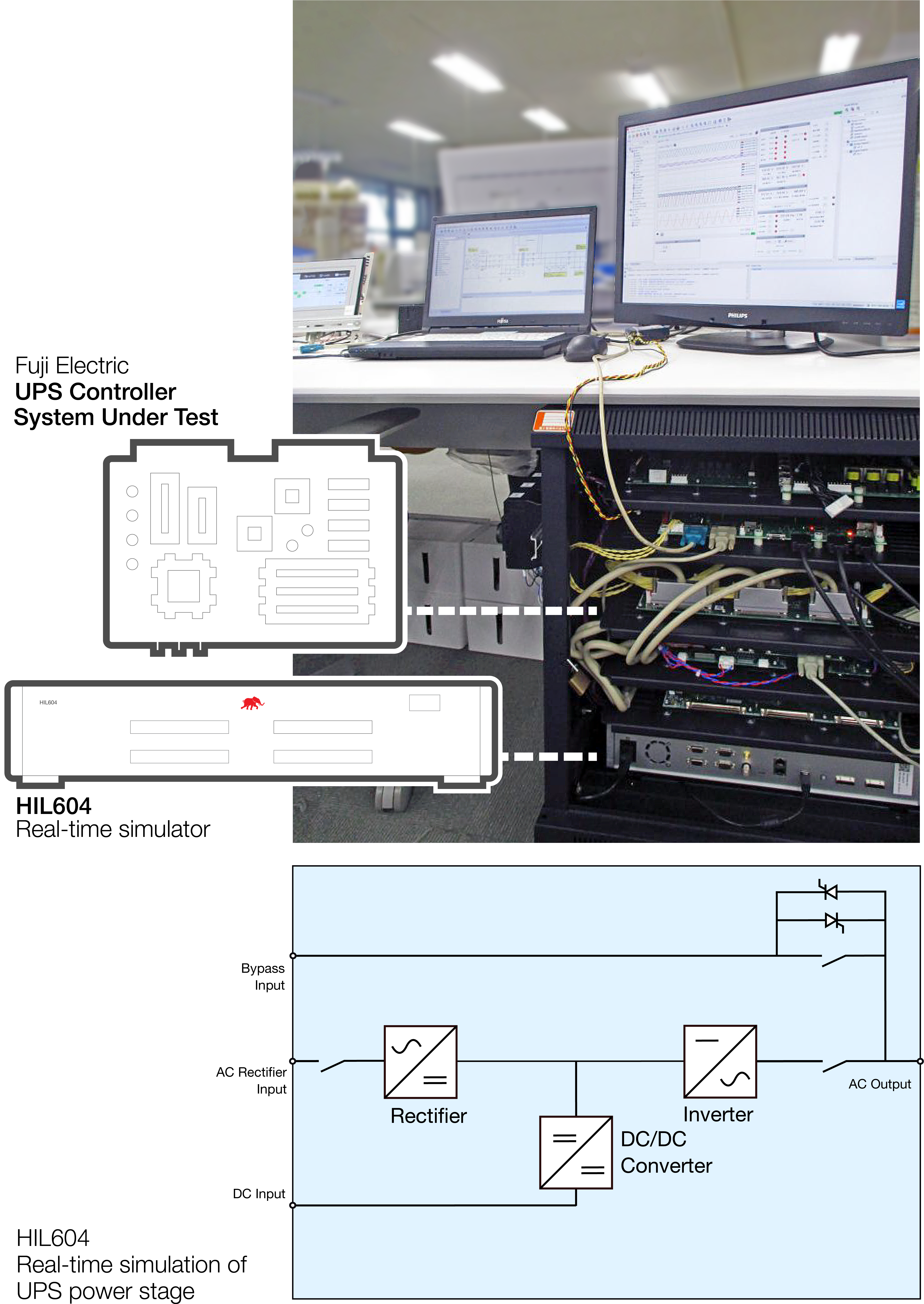
Results
How has the HIL impacted your resourcing and test planning?
When we perform high-power laboratory tests, due to high-voltage high-power requirements, it is necessary to have at least two or more people present during every test, based on our lab safety standards. Furthermore, it takes about a week for two people to prepare the test, arrange equipment, start-up the converter, and prepare all the safety precautions in the lab. With the Typhoon HIL testbed, you can easily start the simulation and run tests in your office, at your desk, at any time of day or night. Once you have created a model in the HIL schematic editor there is no need to plan the test schedule, such as booking the date and time when the converter can be used and product tested. We are so much more flexible and efficient in testing and verification. It is a truly game-changing capability.
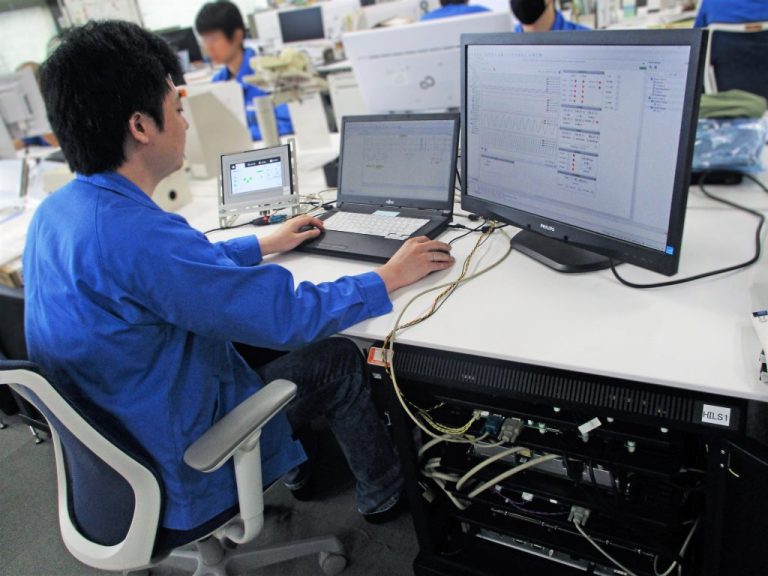
Now we can rapidly verify the operation in cases that are difficult to reproduce in high-power lab, reducing the time and cost.
Mr. Motohiro Tsukuta
What are your future plans with Typhoon HIL?
We continue to expand the HIL utilization for software verification and validation (V&V). We are starting to use the Typhoon Test and plan to deploy overnight automated test runs for software regression testing. Our short-term goal is to reach at least 1000 test cases and to deploy continuous integration (CI) processes for control software development with daily tests, weekly tests, and full release test schedules.
Credits
Interviewer l Isamu Sugiyama
Translator | Ivan Celanovic
Visuals | Fuji Electric, Typhoon HIL
Editor | Debora Santo
